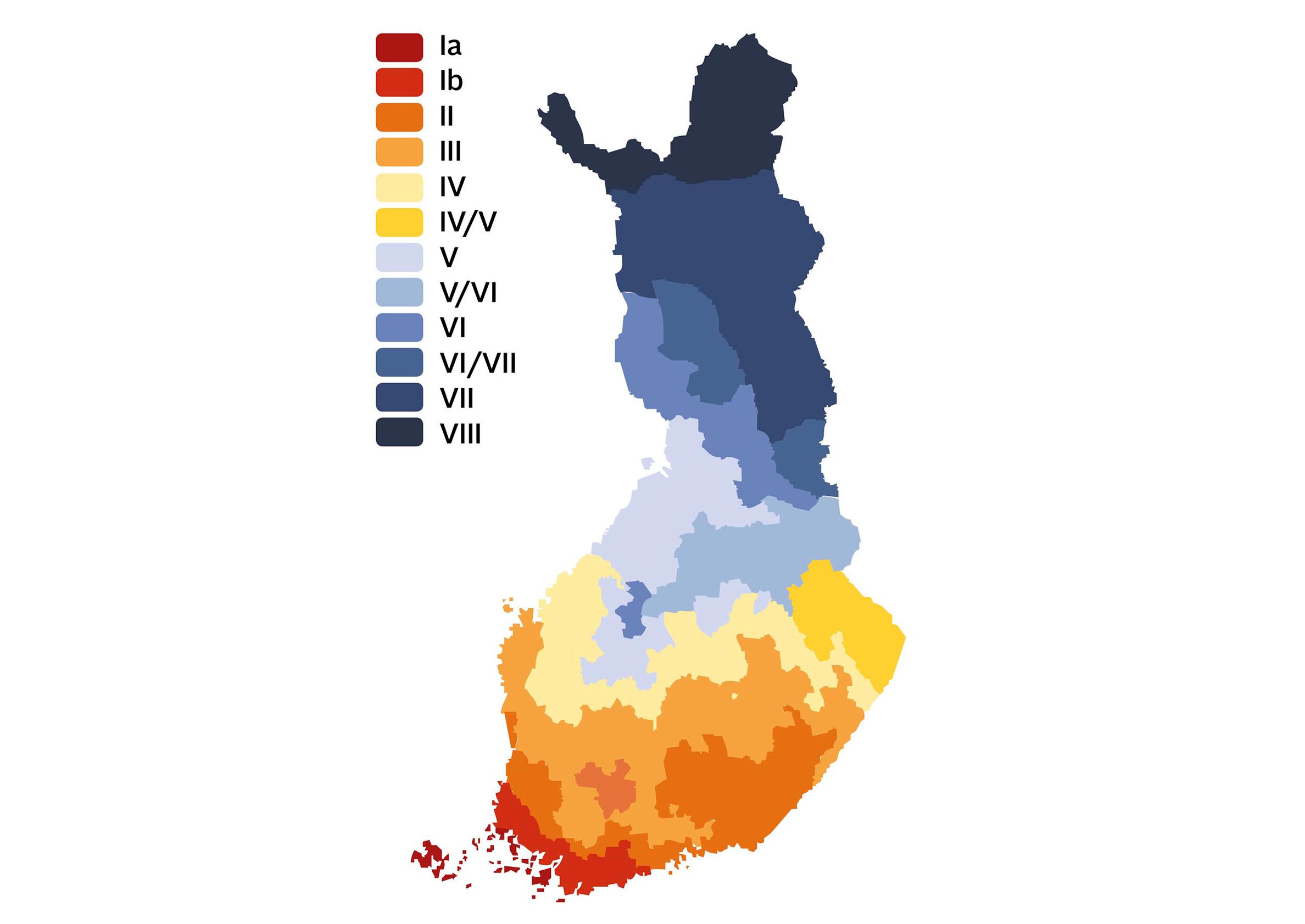
Plant hardiness zones map of Finland
The Finnish plant hardiness zones indicate how far north a plant can survive through the winter. The zones range from I (southernmost Finland) to VIII (northernmost Finland).
When buying seedlings and plants, there’s usually a hardiness zone tag attached to the plant or placed nearby it. This tag displays a hardiness zone number, which indicates how far north the plant can survive through the winter. However, the zone number is only a guideline for selecting plants, as conditions at the growing site can vary greatly, even within one zone.
Today, zone numbers are often written in Arabic numerals, but many Finnish nurseries still use the Roman numerals I–VIII.
The zoning was created by meteorologist Reijo Solantie, and it is based on climate and geography, which influence each other.

What determines where the hardiness zones are located?
Zoning is based on the length of the growing season, the sum of effective temperatures, and winter conditions. The so-called standard freezing temperature influences the Finnish winter climate. It is the average of the three coldest daily minimum temperatures over a 30-year period.
Due to Finland’s northern location, vegetation must withstand snow and frost. However, the cold winters are also beneficial for vegetation, as plant diseases and pests from the south cannot survive Finland’s freezing temperatures.
Another factor affecting the success of plants is how far into the growing season the frost thaws. The harmful effects of frost can be mitigated by applying mulch over tree roots and flower beds.
Bodies of water moderate the temperatures
The local climate also has a significant impact on hardiness zones, as proximity to bodies of water moderates the climate. Seas alleviate the harshest frosts even in midwinter, while the large and deep lakes of southern Finland do so until around Christmas. Lakes ward off frosts during blooming periods. For example, the area around the large lakes of Kanta-Häme forms a zone 2 enclave within zone 3.
The terrain of an area affects the ground-level air layer, known as the microclimate. Cold air accumulates in deep valleys both in summer and winter, while hills are warmer than their surroundings during freezing summer nights and severe winter frosts.
Coniferous trees provide protection
Vegetation also affects the microclimate. The northern and eastern edges of open areas bordered by coniferous trees are especially warm during the day, as solar radiation is most effectively converted into perceptible heat there. Plants growing under trees are best protected from severe frosts and freezing nights, but on the other hand, the shade during the day is disadvantageous to them.
Cultivated and mineral soils are less prone to frost than peatlands or grasslands. A southwest-facing slope of sandy soil leading down to a lake, with coniferous forest uphill to the northeast, is perhaps the ideal microclimatic location for a garden.
It is crucial for both society and farmers to select species and varieties that are likely to thrive in their locations. When appropriate plants are chosen for cultivation, they yield good returns in the form of abundant and stable harvests. This practical benefit accrues to both the farmer and the entire national economy.
Source: Finnish Meteorological Institute


